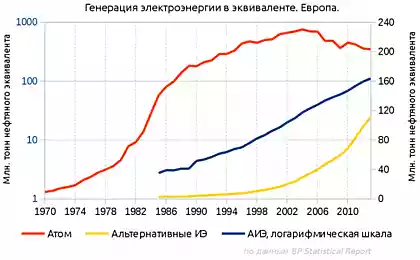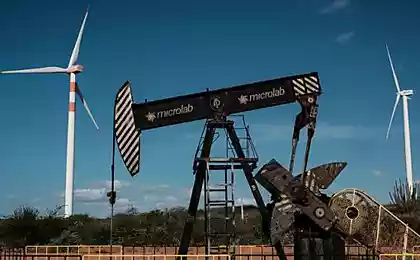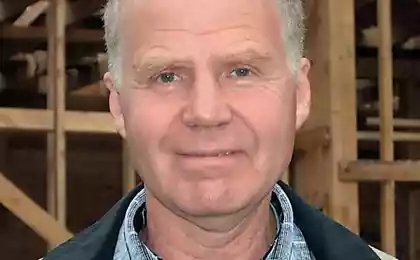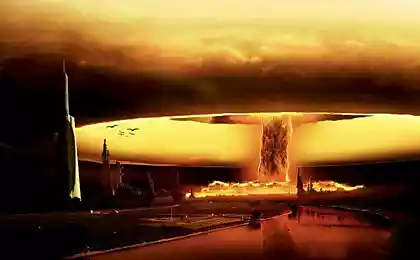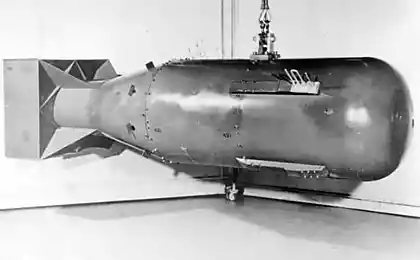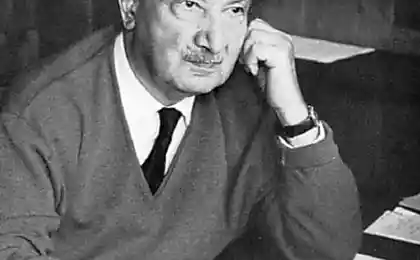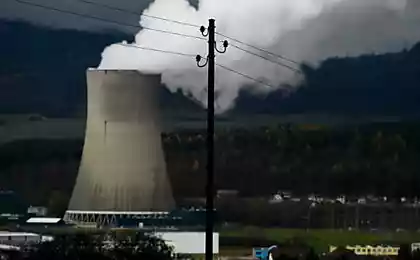244
Nuclear and Alternative Energy in France
The growing needs of mankind for electricity, due to the expansion of production and consumption of goods and services, raising standards of quality of life and population growth, require more rational use of existing and construction of new energy capacities.
In this regard, many developed countries are actively developing alternative energy, the share of which in the global energy balance is constantly growing. However, given the technical features of the use of renewable energy sources, the high cost of electricity production with their help, traditional energy in the near future is not going to give up its position.
Some developed countries are trying to find a balance between the use of different types of traditional energy, which would ensure the relative environmental cleanliness of energy production and stable generation of cheap electricity. A striking example of this is France, which, in contrast to the pan-European trend of abandoning nuclear power plants (NPPs) and the introduction of alternative energy sources, continues to support its nuclear energy.
Today, the French Republic ranks eighth in the world in terms of electricity generation. In 2013, the country produced 568,300 GWh. If we consider the generation of electricity using nuclear power plants, then here the state ranks second in the world in terms of installed capacity - 63,130 MW (as of 2014), second only to the world leader - the United States. At the same time, France holds the palm in terms of the share of nuclear electricity in the total electricity generation in the country - about 75%. Even after the Fukushima-1 disaster, the French government made it clear that there was no question of abandoning nuclear power.
Today, there are 19 nuclear power plants in the republic (including the largest nuclear power plant in France and Western Europe - Gravelin), which operate 58 power units of various capacities; another 12 nuclear reactors have been stopped. France has 34 900 MW reactors, 20 1,300 MW reactors and 4 1,450 MW reactors. In terms of the amount of electricity generated at nuclear power plants, France ranks second in the world after the United States, and is also the largest exporter of electricity in the world.
The French Republic is one of the few states that have a closed nuclear cycle, as are Russia, Japan, the United Kingdom and the Netherlands. It includes: mining, conversion, enrichment, production of fuel, its use in the reactor, possible disposal and disposal of waste. It is thanks to nuclear power that France is largely independent of imports of energy resources, especially oil, and generates about 95% of electricity without the use of coal. Not only does this reduce CO2 emissions, it also allows most policy decisions to be made on their own, without pressure from other countries.
The implementation of the main part of the French nuclear energy program coincided with the world oil crisis (1974-2000). This justified the course of the government on the development of nuclear energy, and the refusal to obtain energy from oil. Since there were no serious accidents at French nuclear power plants, the population of the country treated this energy industry calmly. Even after the Chernobyl disaster, the government claimed that the radioactive cloud had not reached the French border. But these claims have been refuted by independent scientists who have caught nuclear lobbyists lying.
Today, the French are ambiguous about nuclear power. So, the society of “green” proposed to hold a referendum on the rejection of the use of nuclear power plants, but the government, acting as a co-owner of the French nuclear concern Areva, did not support the initiative and continues to actively lobby for nuclear energy. France’s nuclear safety agency (ASN) records about 800-900 nuclear accidents each year across the country, but the country’s nuclear sector has been outside the zone of democratic influence until recently.
Global trends in the development of alternative energy in recent years have had an impact on changes in the energy policy of France. So, in 2014, the French Parliament supported the decision to reduce electricity production using nuclear power plants and switch to alternative energy sources. By 2025, it is planned to reduce the share of the atom in electricity production from 75 to 50%. According to the developed state programs, the maximum capacity of the nuclear power plant will remain at the current level, but several nuclear reactors will be closed. According to the government, alternative energy has great potential and can increase the level of employment of the population. An element of its implementation is the so-called blue energy plan – to produce 6,000 by 2020. MW of energy from the ocean.
To stimulate the active development of alternative energy, the French government adopted a set of measures obliging Electrisite de France to purchase electricity from “green” generating companies at a set tariff, and also ensured the attraction of significant investment in the industry. The result was an increase in the share of renewable energy in gross electricity consumption from 10.8% in 2005 to 18.2% in 2013. This policy of the authorities, supported by positive results, should help the country to reach the 23 percent threshold for generating electricity from renewable energy sources by 2020.
Today, the capacity of wind turbines in France reaches 4,850 MW. They account for only 1.5% of the total electricity production in the republic. The capacity of solar installations is only 850 MW. The development of this sector is carried out through government subsidies, and the cost of 1 kW produced using solar panels is the highest among all energy sources, putting an additional burden on taxpayers.
In conclusion, the existing nuclear power plants allow France to be an energy independent state. Exporting electricity is also a lucrative business for the country, given that Germany plans to phase out all nuclear power plants on its territory until 2022. And, although the “peaceful atom” has served the French people, the trend of transition to alternative energy sources is gaining strength in France. The priority areas are: solar and wind energy, hydroelectric power plants, biomass and biofuels. At the same time, it should be predicted that in the near future nuclear power will remain at the leading positions in the energy complex of the country. published
P.S. And remember, just changing our consumption – together we change the world!
Source: alternativenergy.ru/energiya/936-atomnaya-i-alternativnaya-energetika-francii.html
In this regard, many developed countries are actively developing alternative energy, the share of which in the global energy balance is constantly growing. However, given the technical features of the use of renewable energy sources, the high cost of electricity production with their help, traditional energy in the near future is not going to give up its position.
Some developed countries are trying to find a balance between the use of different types of traditional energy, which would ensure the relative environmental cleanliness of energy production and stable generation of cheap electricity. A striking example of this is France, which, in contrast to the pan-European trend of abandoning nuclear power plants (NPPs) and the introduction of alternative energy sources, continues to support its nuclear energy.
Today, the French Republic ranks eighth in the world in terms of electricity generation. In 2013, the country produced 568,300 GWh. If we consider the generation of electricity using nuclear power plants, then here the state ranks second in the world in terms of installed capacity - 63,130 MW (as of 2014), second only to the world leader - the United States. At the same time, France holds the palm in terms of the share of nuclear electricity in the total electricity generation in the country - about 75%. Even after the Fukushima-1 disaster, the French government made it clear that there was no question of abandoning nuclear power.
Today, there are 19 nuclear power plants in the republic (including the largest nuclear power plant in France and Western Europe - Gravelin), which operate 58 power units of various capacities; another 12 nuclear reactors have been stopped. France has 34 900 MW reactors, 20 1,300 MW reactors and 4 1,450 MW reactors. In terms of the amount of electricity generated at nuclear power plants, France ranks second in the world after the United States, and is also the largest exporter of electricity in the world.
The French Republic is one of the few states that have a closed nuclear cycle, as are Russia, Japan, the United Kingdom and the Netherlands. It includes: mining, conversion, enrichment, production of fuel, its use in the reactor, possible disposal and disposal of waste. It is thanks to nuclear power that France is largely independent of imports of energy resources, especially oil, and generates about 95% of electricity without the use of coal. Not only does this reduce CO2 emissions, it also allows most policy decisions to be made on their own, without pressure from other countries.
The implementation of the main part of the French nuclear energy program coincided with the world oil crisis (1974-2000). This justified the course of the government on the development of nuclear energy, and the refusal to obtain energy from oil. Since there were no serious accidents at French nuclear power plants, the population of the country treated this energy industry calmly. Even after the Chernobyl disaster, the government claimed that the radioactive cloud had not reached the French border. But these claims have been refuted by independent scientists who have caught nuclear lobbyists lying.
Today, the French are ambiguous about nuclear power. So, the society of “green” proposed to hold a referendum on the rejection of the use of nuclear power plants, but the government, acting as a co-owner of the French nuclear concern Areva, did not support the initiative and continues to actively lobby for nuclear energy. France’s nuclear safety agency (ASN) records about 800-900 nuclear accidents each year across the country, but the country’s nuclear sector has been outside the zone of democratic influence until recently.
Global trends in the development of alternative energy in recent years have had an impact on changes in the energy policy of France. So, in 2014, the French Parliament supported the decision to reduce electricity production using nuclear power plants and switch to alternative energy sources. By 2025, it is planned to reduce the share of the atom in electricity production from 75 to 50%. According to the developed state programs, the maximum capacity of the nuclear power plant will remain at the current level, but several nuclear reactors will be closed. According to the government, alternative energy has great potential and can increase the level of employment of the population. An element of its implementation is the so-called blue energy plan – to produce 6,000 by 2020. MW of energy from the ocean.
To stimulate the active development of alternative energy, the French government adopted a set of measures obliging Electrisite de France to purchase electricity from “green” generating companies at a set tariff, and also ensured the attraction of significant investment in the industry. The result was an increase in the share of renewable energy in gross electricity consumption from 10.8% in 2005 to 18.2% in 2013. This policy of the authorities, supported by positive results, should help the country to reach the 23 percent threshold for generating electricity from renewable energy sources by 2020.
Today, the capacity of wind turbines in France reaches 4,850 MW. They account for only 1.5% of the total electricity production in the republic. The capacity of solar installations is only 850 MW. The development of this sector is carried out through government subsidies, and the cost of 1 kW produced using solar panels is the highest among all energy sources, putting an additional burden on taxpayers.
In conclusion, the existing nuclear power plants allow France to be an energy independent state. Exporting electricity is also a lucrative business for the country, given that Germany plans to phase out all nuclear power plants on its territory until 2022. And, although the “peaceful atom” has served the French people, the trend of transition to alternative energy sources is gaining strength in France. The priority areas are: solar and wind energy, hydroelectric power plants, biomass and biofuels. At the same time, it should be predicted that in the near future nuclear power will remain at the leading positions in the energy complex of the country. published
P.S. And remember, just changing our consumption – together we change the world!
Source: alternativenergy.ru/energiya/936-atomnaya-i-alternativnaya-energetika-francii.html
The 300 Best Documentaries to Expand Consciousness
What Your Selfie Can Tell You About Your Personality

